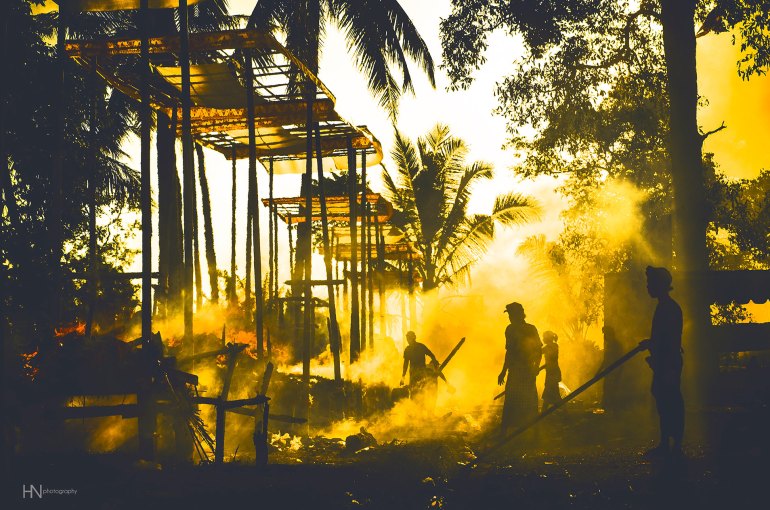
Across cultures, memorializing loved ones is a special and symbolic tradition that dates back generations. With so many religions and cultures around the world, it’s inspiring to see the diversity within the ceremonies. For example, we explored in our last blog post that some Hindu families insist on pressing the crematory button for the cremation. In the United States, many of us have attended funerals that have all been very much the same. Relatives arrive in all black and sit in the pews for a somber ceremony. They follow a hearse to a cemetery where they place roses on the casket before its lowered to the ground.
It’s a beautiful ceremony, but cultural anthropologist Kelli Swazey in her TED Talk Life That Doesn’t End With Death shares a different approach to memorializing the deceased. While many of us have a religious connection with the traditional Christian or Jewish funeral service, it’s inspiring to hear about how other cultures celebrate their loved ones.
Funeral practices are deeply ingrained in culture and around the globe there are wide ranges of beliefs and values. Let’s talk about a few!
Tana Toraja, Indonesia
In Tana Toraja in eastern Indonesia, funerals are boisterous affairs involving the whole village. Families save up for long periods to raise the money for a lavish funeral, that can last anywhere from days to weeks, where sacrificial water buffalo carry the deceased soul into the afterlife. Until the sacrifice — which can take place years after physical death — the dead relative is referred to simply as a “person who is sick,” or even one “who is asleep.” During this limbo, they are laid down in special rooms in the family home, where they are symbolically fed, cared for, and taken out — “living” very much still with their relatives.
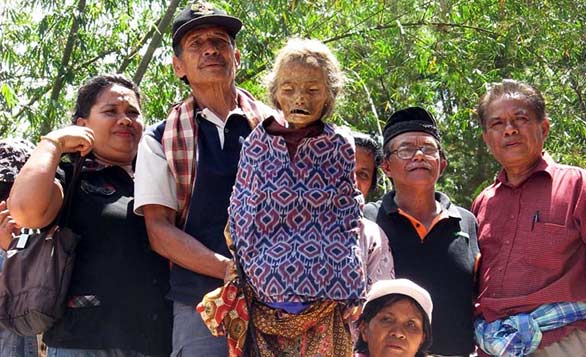
New Orleans jazz funeral
New Orleans always does it big. One of the classic images of New Orleans is their raucous, jazz-tinged funeral procession. Fusing West African, French, and African-American traditions, funerals in New Orleans strike a unique balance between joy and grief as mourners are lead by a marching band. At first, the band plays sorrowful songs, but once the body is buried, they play upbeat, cathartic music that makes you want to dance to commemorate the life of the deceased.
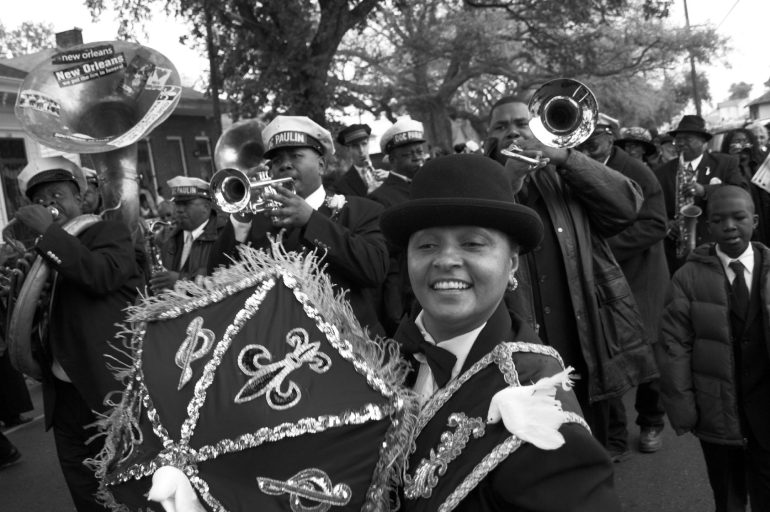
South Korean burial beads
In South Korea, a law in 2000 was passed that requires anyone burying a loved one to remove the grave after 60 years, largely due to the dwindling graveyard space. Since then, cremation has become much more popular. However, families don’t always opt for ashes. Several companies have popped up to give families another option. Families have the option to compress their loved one’s remains into gem-like beads in turquoise, pink or black. These “death beads” are often displayed in the home.
Filipino death traditions
There are many ethnic groups in the Philippines and all have unique funeral traditions. The Benguet of Northwestern Philippines blindfold their dead and place them next to the main entrance of the house. The Tinguian group dress bodies in their best clothes, sit them on a chair, and place a lit cigarette in their lips. The Caviteño, who live near Manila, bury their dead in a hollowed-out tree trunk. When someone becomes ill, they select a tree where they will eventually be entombed. Up north, the Apayo bury their dead under their kitchen. We always knew the kitchen was the most important room in the house!
Sky burial in Mongolia and Tibet
Many Vajrayana Buddhists in Mongolia and Tibet believe in the transmigration of spirits after death where, essentially, the soul moves on while the body becomes an empty vessel. To return it to the earth, the body is chopped into pieces and placed on a mountaintop, which exposes it to the elements — including wild scavengers. It may sound a little gruesome, but it’s a tradition that’s been practiced for thousands of years and, according to a recent report, about 80% of Tibetans still choose it.
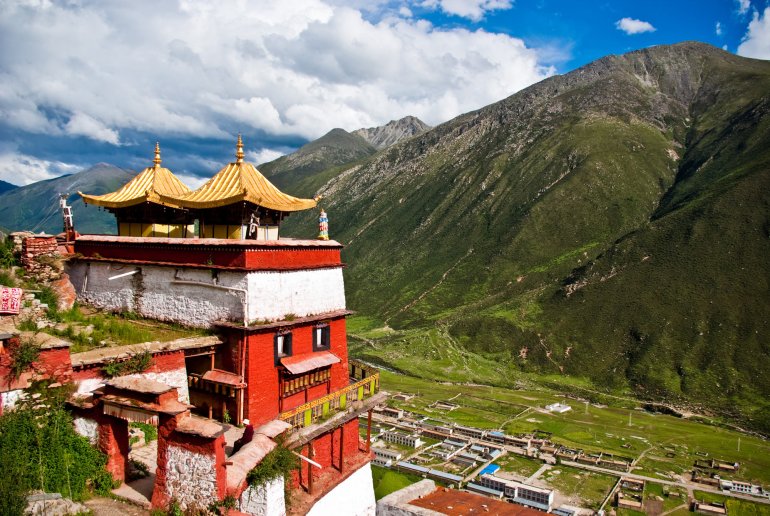
Green funerals
In the USA, there’s been a shift to people opting for environmentally friendly burials. This means skipping the embalming process, nixing traditional concrete vaults, and getting biodegradable, woven-willow caskets, which decompose into the ground. According to the Green Burial Council, there are 22 cemeteries nationwide with certified natural burial grounds, up from only one in 2006. Another way you can help the planet after death is becoming a memorial reef, an option we discussed in our blog post How to Personalize a Cremation. A company called Eternal Reefs compresses remains into a sphere that is attached to a reef in the ocean, providing a habitat for sea life.
Balinese cremation
Miguel Covarrubias once wrote in the 1937 book, Island of Bali, “Strange as it seems, it is in their cremation ceremonies that the Balinese have their greatest fun.” In 2008, the island saw one of its most lavish cremations ever as Agung Suyasa, head of the royal family, was burned along with two other royal figures and 68 commoners. The bodies of the commoners had waited to join Suyasa and two other members of his extended family in a royal cremation, although the pyres of the commoners were in a separate location.
Thousands of volunteers gathered to carry a giant bamboo platform, a huge wooden bull, and a wooden dragon down the streets. After a long procession, Suyasa’s body was eventually placed inside the bull and burned as the dragon stood witness. In the Balinese tradition, cremation releases the soul so it is free to inhabit a new body, which is considered a sacred duty.

The turning of the bones in Madagascar
The Malagasy people of Madagascar have a famous ritual called “famadihana,” or “the turning of the bones.” Once every five or seven years, a family celebrates its ancestral crypt where the bodies, wrapped in cloth, are exhumed and sprayed with wine or perfume. Family members dance with the bodies as a band plays at the lively event. For some, it’s a chance to pass family news to the deceased and ask for their blessings. For others, it’s a time to remember and tell stories of the dead.
Aboriginal mortuary rites
In Australia’s Northern Territory, when a loved one dies in Aboriginal society, elaborate rituals begin. First, a smoking ceremony is held in the loved one’s living area to drive away their spirit. Next, a feast is held. With mourners painted with ochre, they partake in dance, food, and drink. The body is traditionally placed atop a platform and covered in leaves as it is left to decompose. It’s been reported that in some traditions, fluids from the platform can help identify the deceased’s killer.
Ghana fantasy coffins
In Ghana, people aspire to be buried in coffins that represent their work or something they loved in life. These “fantasy coffins” were recently popularized by Buzzfeed, which showed images of 29 interesting and dramatic coffins. One was shaped like a Mercedes-Benz for a businessman, another looked like an oversized fish for a fisherman, and a third resembled a large Bible for someone who loved going to church.
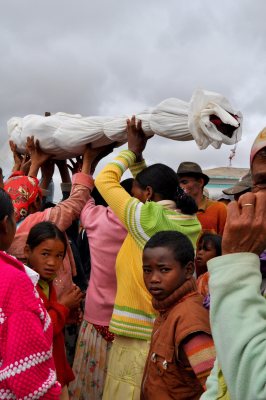
It’s beautiful to learn about all of the after death traditions on this planet. One interesting note to mention is that black doesn’t always signify death in all cultures as it does in the West. White, purple, grey, green, and yellow also mark the passage of life in different parts of the world. Check out this visualization from David McCandless and his ted talk The Beauty of Data Visualization. It shows which colors are used where (row 16 shows the color associated with death and row 59 reveals the varied colors associated with mourning.)
Do you know of any other interesting funeral traditions? Comment below!



Recent Comments